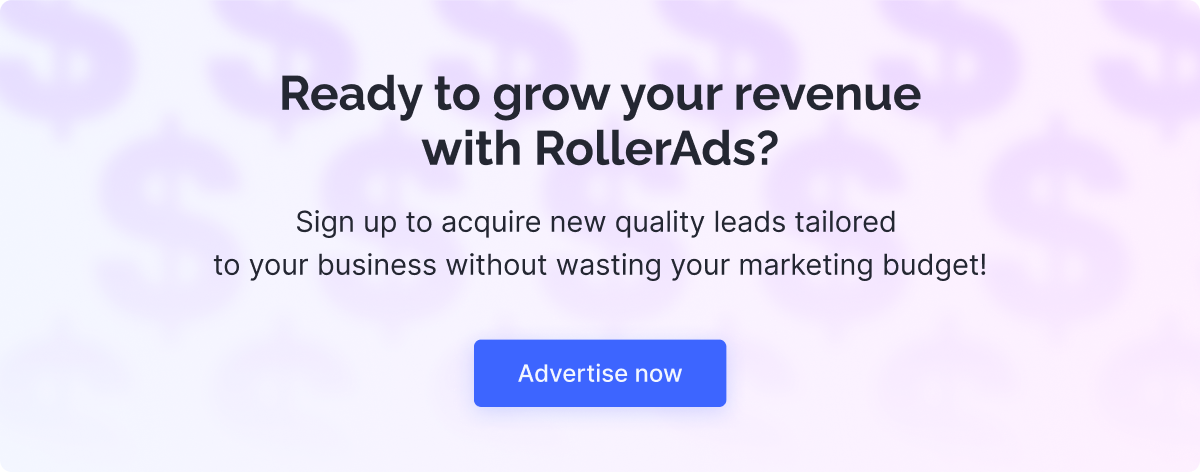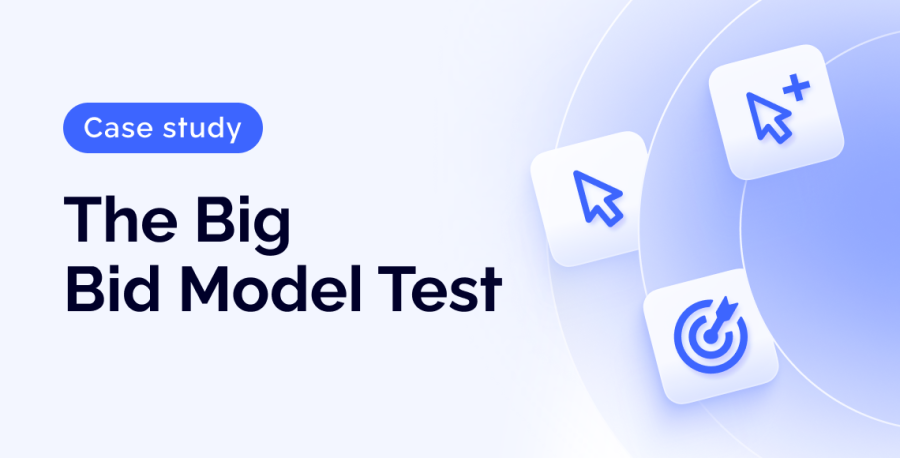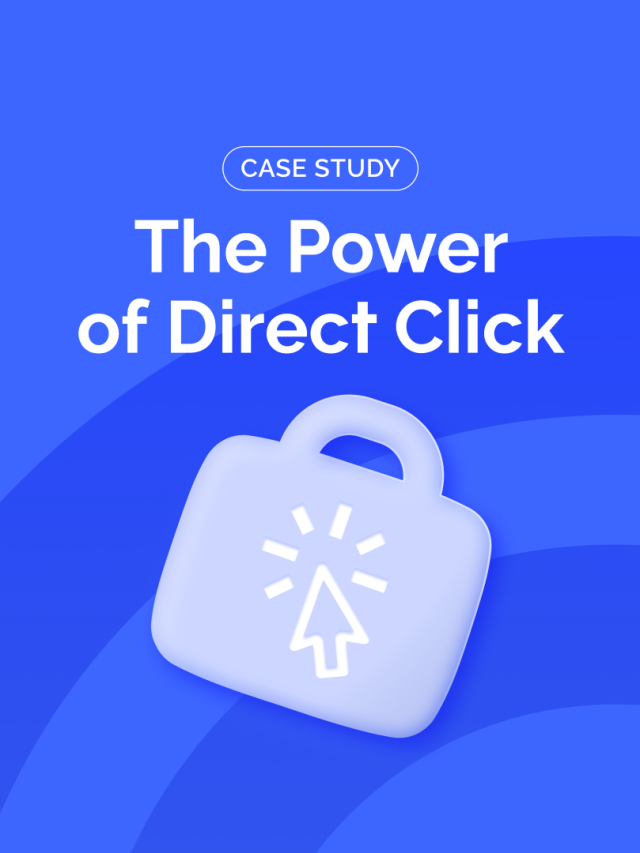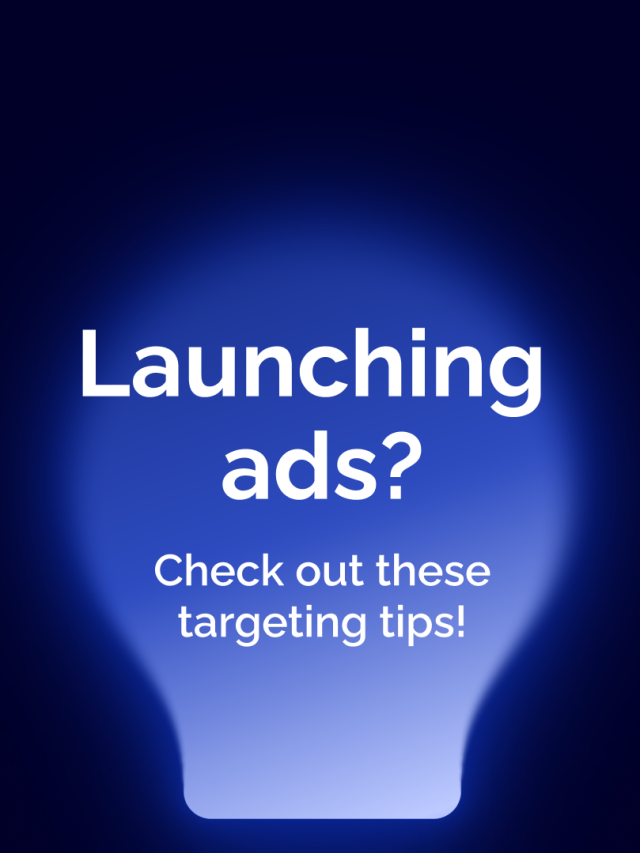Initial tests are the cornerstone of successful ad campaigns—they lay the foundation for the future results of your affiliate marketing efforts. But sometimes, tests can eat up the budget and leave affiliates back at square one. To avoid such situations and to help you breeze through tests toward profit, we’re continuing our case study series on testing.
This time, we’ll dive into CPC, SmartCPC, and CPA Goal to uncover which bid model works best for initial tests—and how to scale further using the data they provide. So let’s roll up our sleeves and get straight to the action.
Unpacking Bid Models
Before launching tests, let’s briefly revisit the core of the bid models we’ll be working with. Can you easily tell one from another? Then feel free to skip ahead to the part you came here for.
CPC
CPC, or cost per click, is a bidding model where advertisers are charged only when someone actually clicks on their ad. With CPC, you set a fixed bid, and each click on your ad costs exactly that amount.
SmartCPC
SmartCPC is a bidding model that dynamically adjusts your bid to match the real-time auction price. This way, you avoid overpaying, launch campaigns more efficiently, and at the same time build valuable whitelists of top-performing zones and feeds.
CPA Goal
CPA Goal goes a step further, and while SmartCPC is aimed at maximizing clicks at the best possible price, CPA Goal focuses on achieving a specific Cost Per Action.
The system automatically adjusts bids per zone to hit your target CPA: lowering bids where conversions are too costly, raising them where they’re cheaper, and excluding weak zones altogether. For zones without conversions, bids are fine-tuned using average campaign data to boost efficiency.
Now that we’ve brushed up on the models, let’s get to the part we’re all here for.
Let the Testing Begin
For this test, we’ve taken a sweepstakes offer from our long-standing partner CpaRoll affiliate network and launched three test campaigns on CPC, SmartCPC, and CPA Goal.
US – Free Samples Pro – Surprise Box (Social) – CPL (2488)
Ad format: Push
Category: Sweepstakes
Geo: United States
Device: Mobile
OS: Android
Payout: $3
CPC Test Ride
We entered all the usual data to launch a test: chose an ad format, selected a bid model, and provided the name and the target URL.
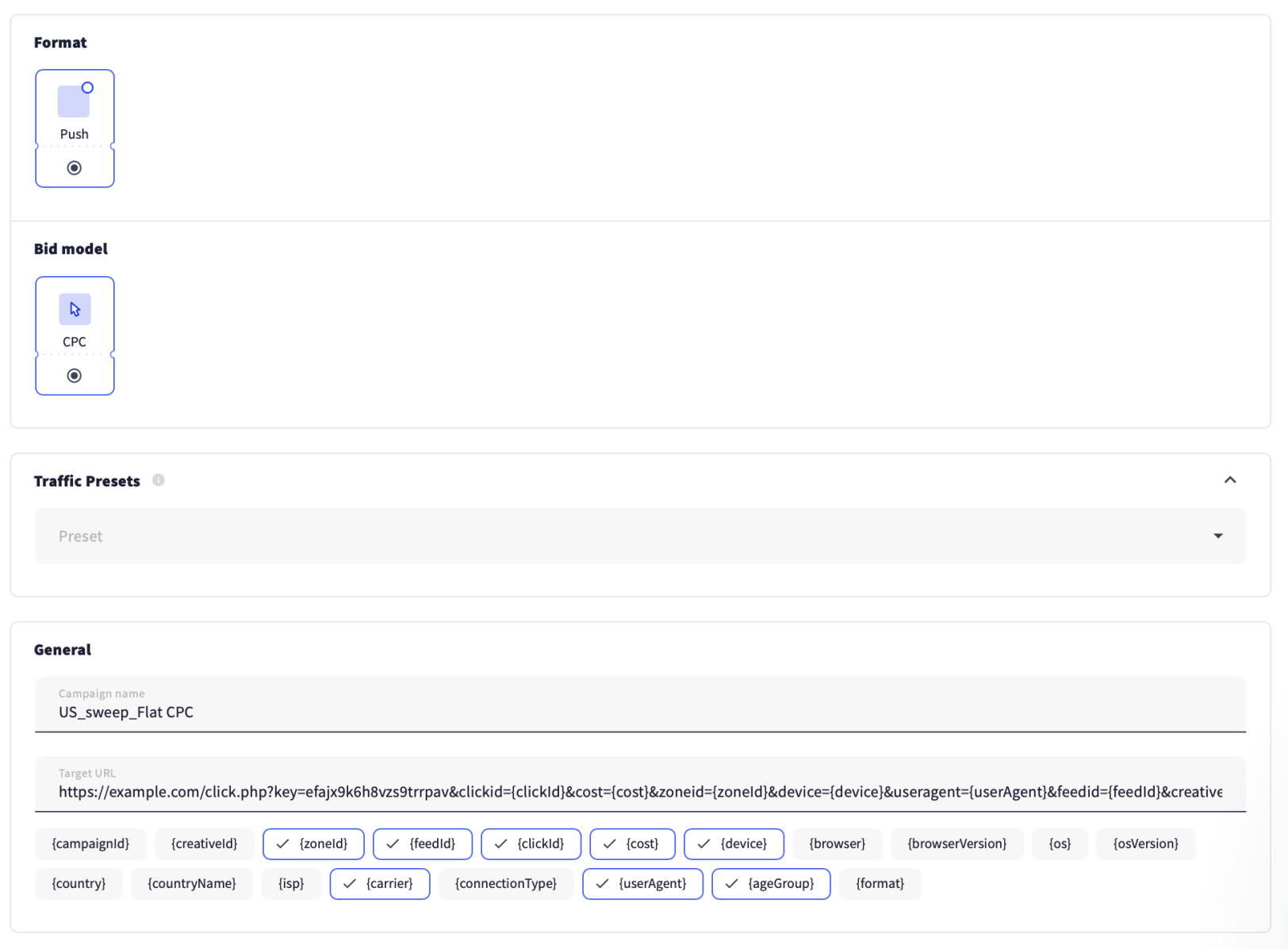
We also added 10 creatives matching the offer. It’s always a good idea to include up to 10 so you can spot which ones perform best and have some leeway to tweak them later when optimizing your campaigns.
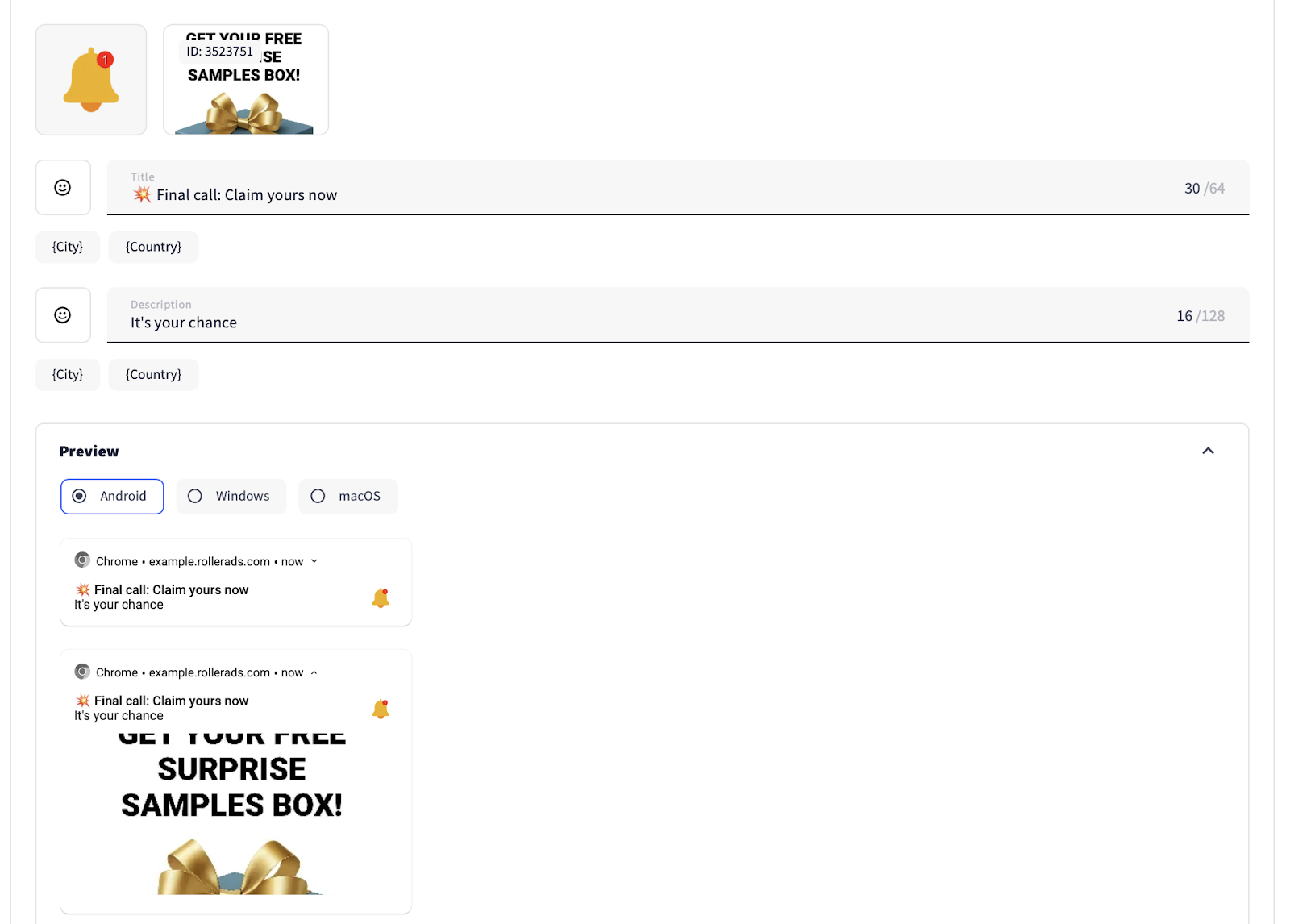
We chose the US and disabled proxy traffic.
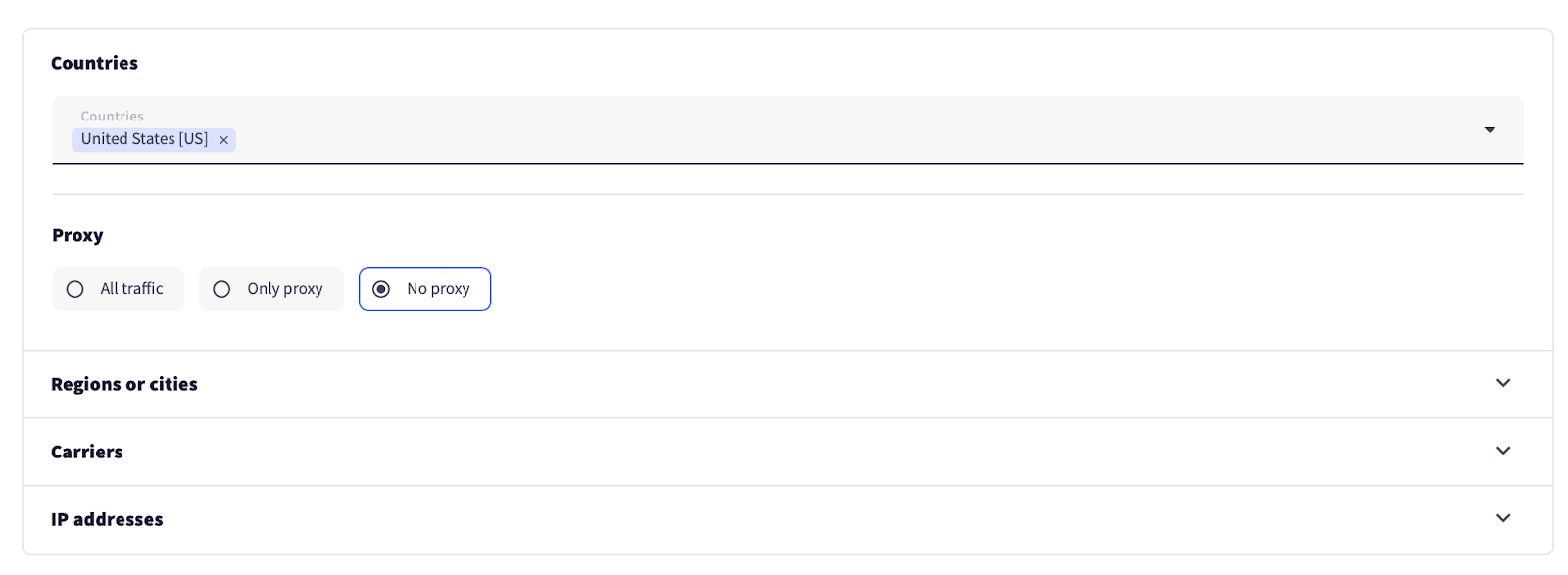
We set the bid according to the category and GEO we were working with: $0.111.
If you’re a pro in affiliate marketing and confident with the numbers, trust your knowledge and expertise. But if you’re new to all that, consult your manager or support team to stay on the safe side.
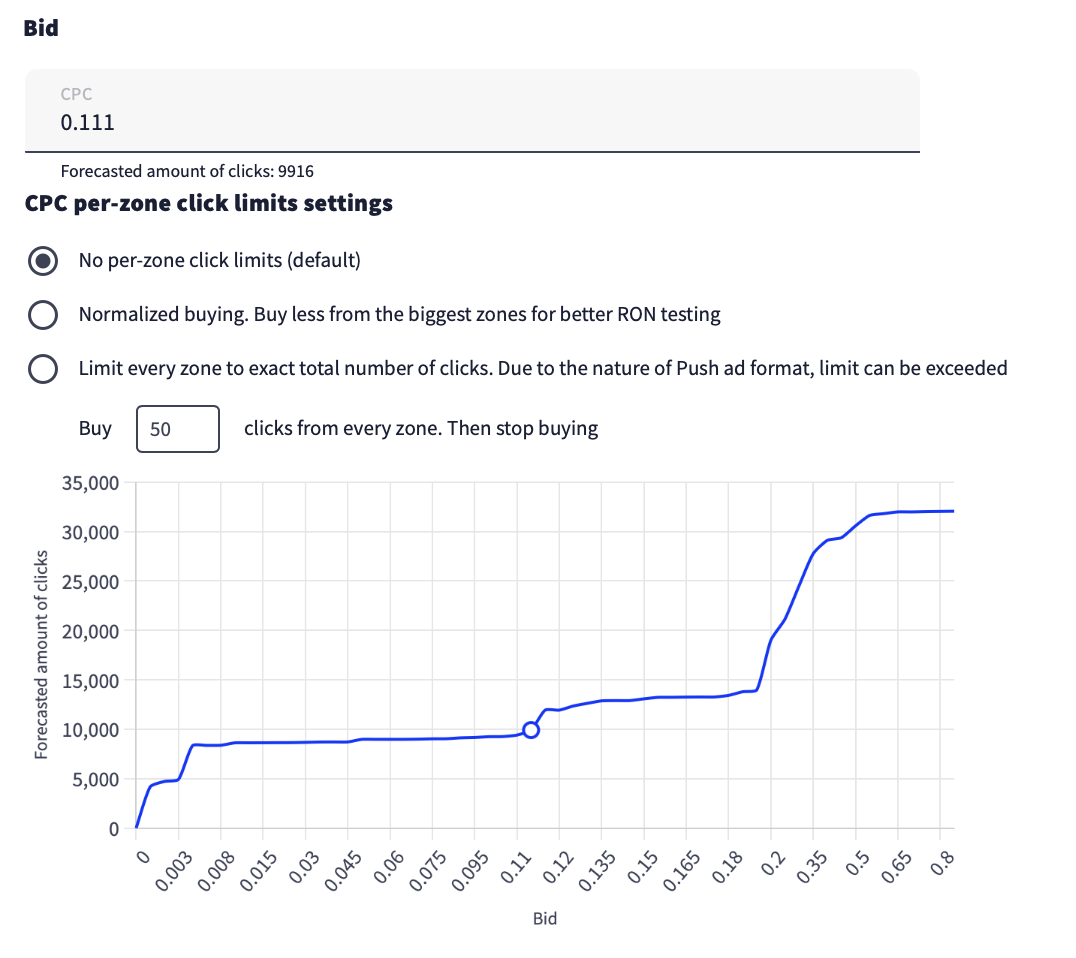
We set the daily budget and subscription age: 0–3 days for the most active users.

We also didn’t neglect additional targets specified in the offer.
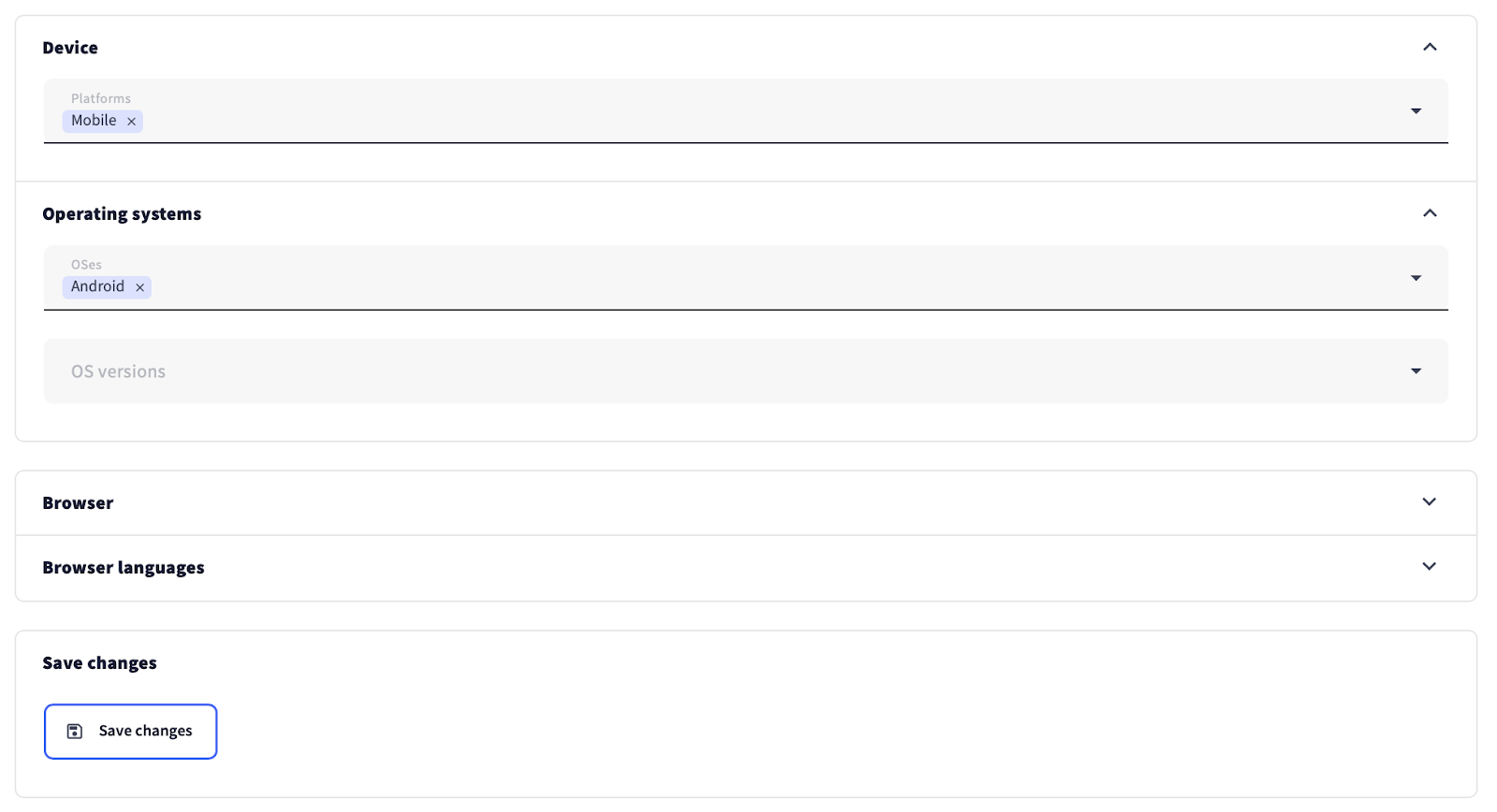
After that, the test was ready to be submitted for moderation.

Smart CPС Test Launch
Here, we followed the same steps as in the CPC test, but without bid settings. As you know, smart bid models automatically determine the optimal bid. To avoid limiting traffic from higher-quality, pricier zones, do not set a maximum bid.
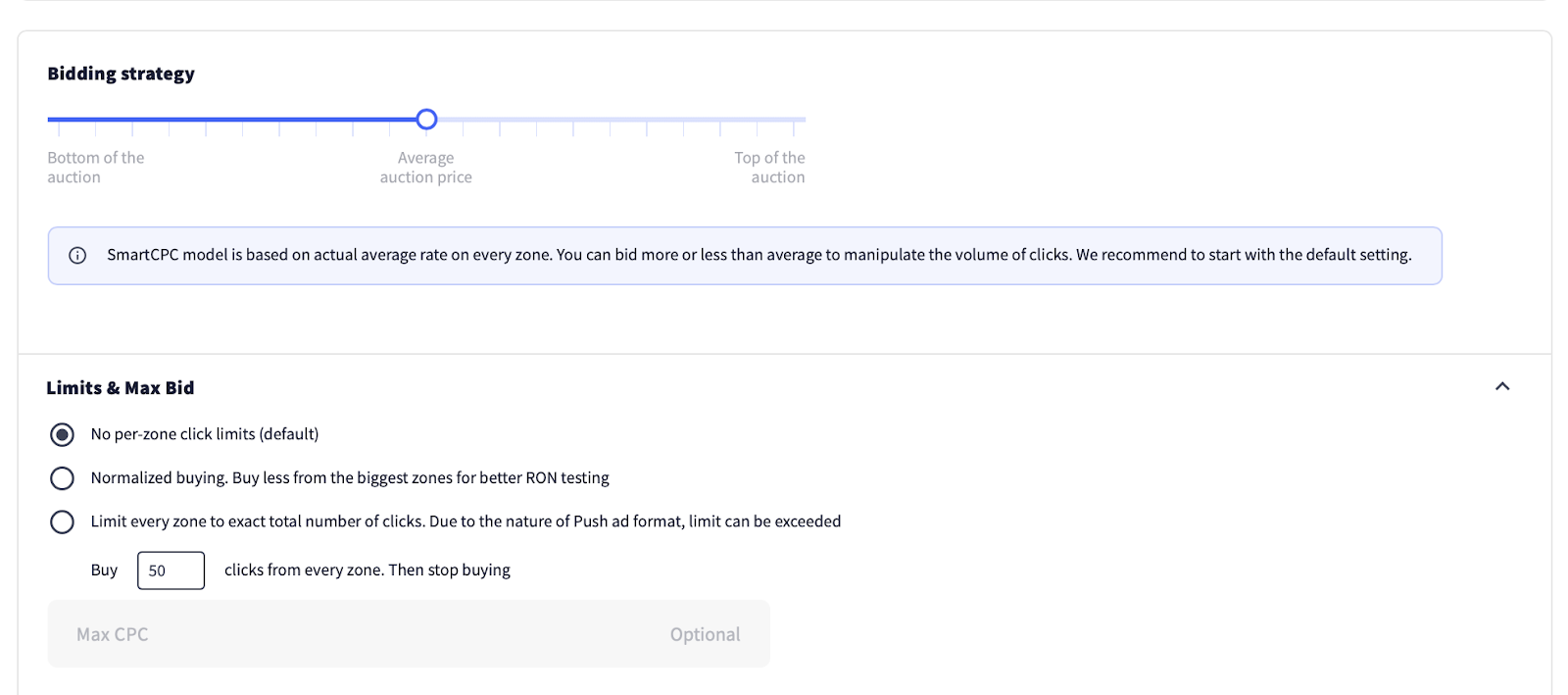
The rest of the targets (as well as creatives) were the same as in the previous test.
Firing up the CPA Goal Test
CPA Goal works its magic with bids and traffic to achieve the target CPA. That’s why it’s important to inform the platform about conversions. To do this, you need to integrate the postback. Wondering what it is and how to set it up? Head over to our blog for step-by-step instructions.
When setting the target CPA, we specified $3 as the desired conversion price (based on our offer’s payout) and set the zone test limit slightly above that—$4. Typically, it’s recommended to set the limit at twice the target CPA, but we chose $4 as a compromise, allowing us to avoid being constrained by the conversion payout while running slightly more traffic in each zone.
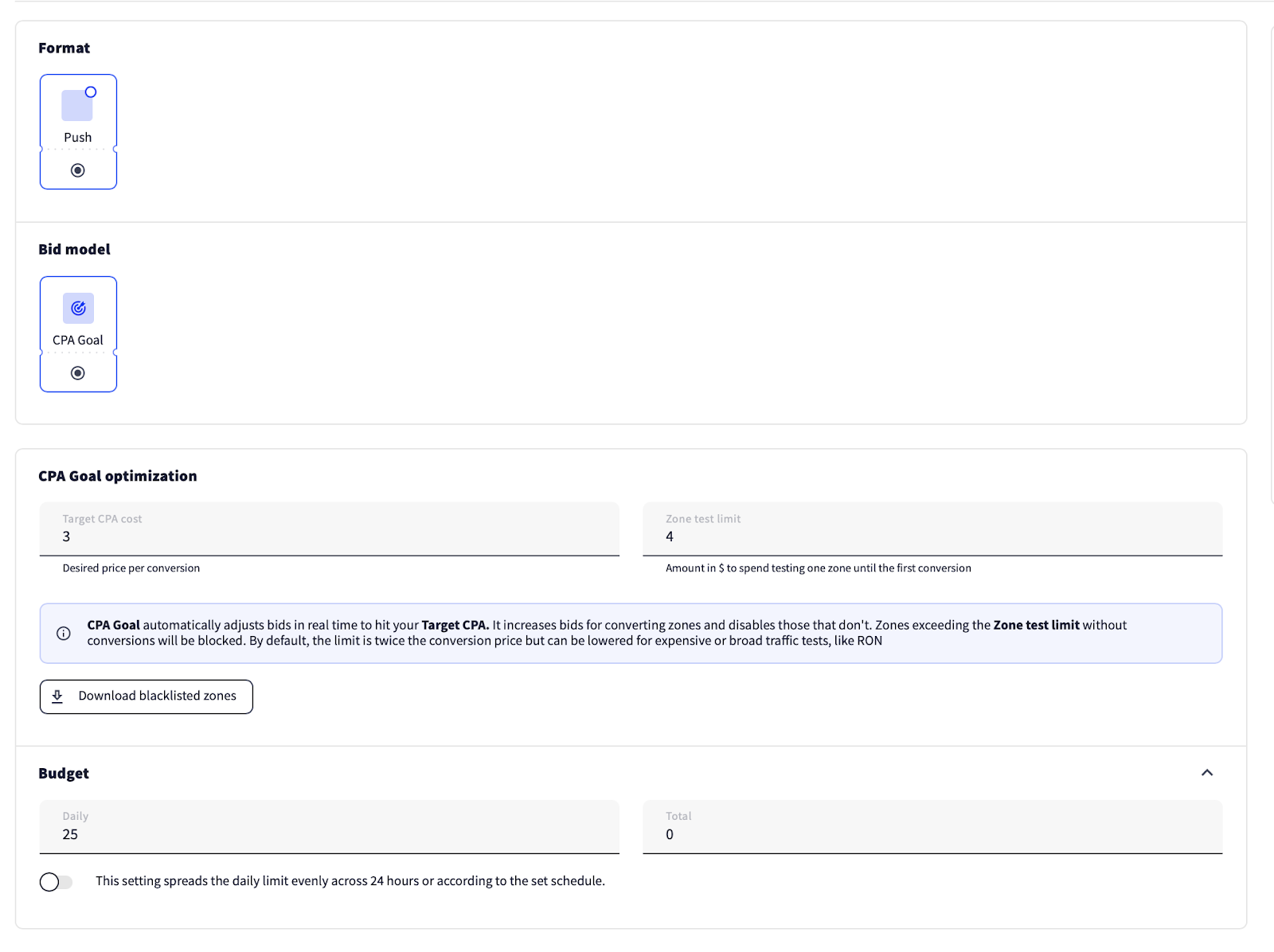
We also set the daily budget and used the same targets and creatives as before to keep the test consistent.
Optimizing All Tests
Check out the screen below to see the results after the first day across all three tests.

We used approximately similar test budgets across all bid models, and at this point, it seemed that CPA Goal was working more efficiently, though there weren’t enough conversions yet to confirm this. However, we had enough data to blacklist what clearly didn’t work and continue our test. Also, CPA Goal allowed us to test more expensive traffic with a CPC more than twice as high.
Let’s get to optimization.
In the CPC test, we blocked zones that generated plenty of clicks but failed to bring any conversions.

We also removed creatives following the same strategy as with zones: they generated clicks but didn’t bring any conversions. We decided to keep one that showed results and four that didn’t receive any traffic to test their performance.

In the SmartCPC test, we followed the same strategy with zones…

…and creatives.

Even though the CPA Goal bid model is the king of automation, it still requires control and optimization like any other bid model. We blocked a couple of zones that, despite not reaching our test zone limit, showed the worst results.

We also stopped the non-productive creatives.

The second day brought us the following results:

Test Takeaways
Here you can see the total results after testing:

It goes without saying that even after thorough optimization, CPC lagged so far behind with its -72.14% ROI that we had to come to grips with the losses and stop it for good. As for SmartCPC (-33.48% ROI) and CPA Goal (-36.27% ROI), the prospects were much brighter, as they allowed us to form whitelists of zones and creatives, which we could use to scale, recover costs, and generate profit. And you are about to see that.
Scaling the SmartCPC Test
We used the same offer to scale the campaigns.
Although you can scale within the same SmartCPC campaign (by excluding underperforming zones, adding new targeting options, and setting custom bids for specific zones), we decided to scale on CPC with the idea in mind to get maximum traffic from our whitelist of zones and feeds.
So we had to create a new campaign.
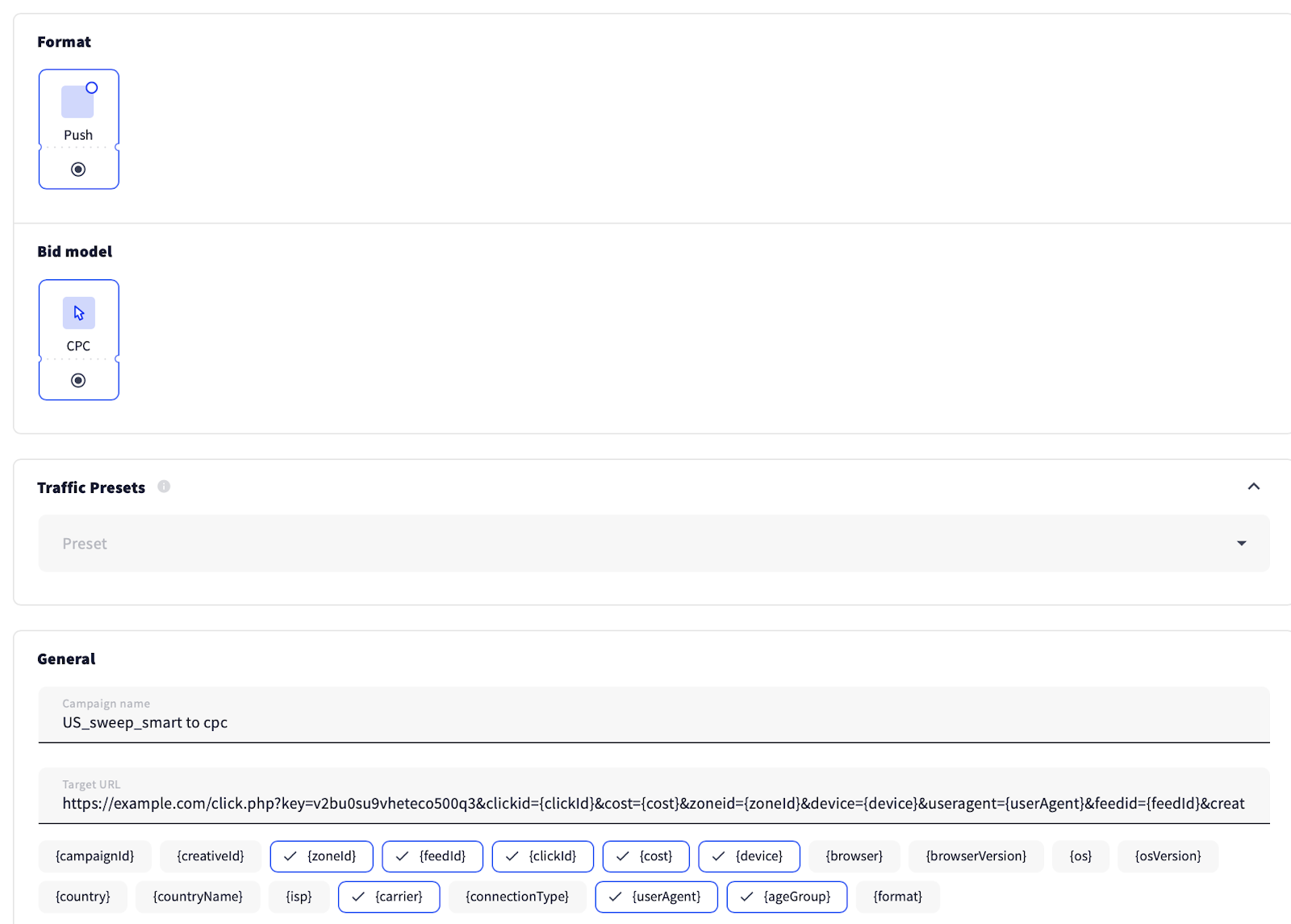
We added creatives.
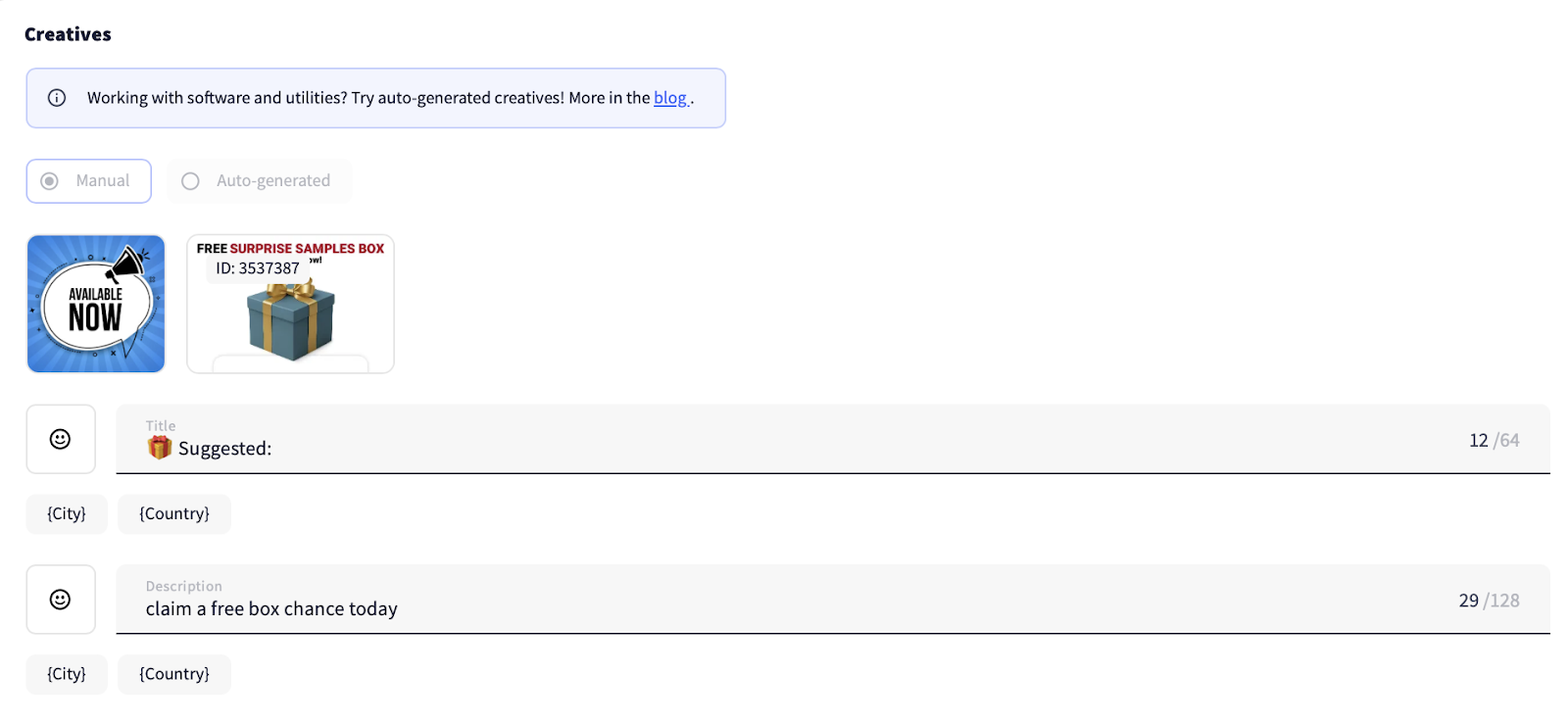
Specified GEO and disabled proxy traffic.

Regarding the bids, after analyzing the data from the SmartCPC test, we set the average at $0.095. This seemed to work perfectly for acquiring traffic from the main converting feeds.
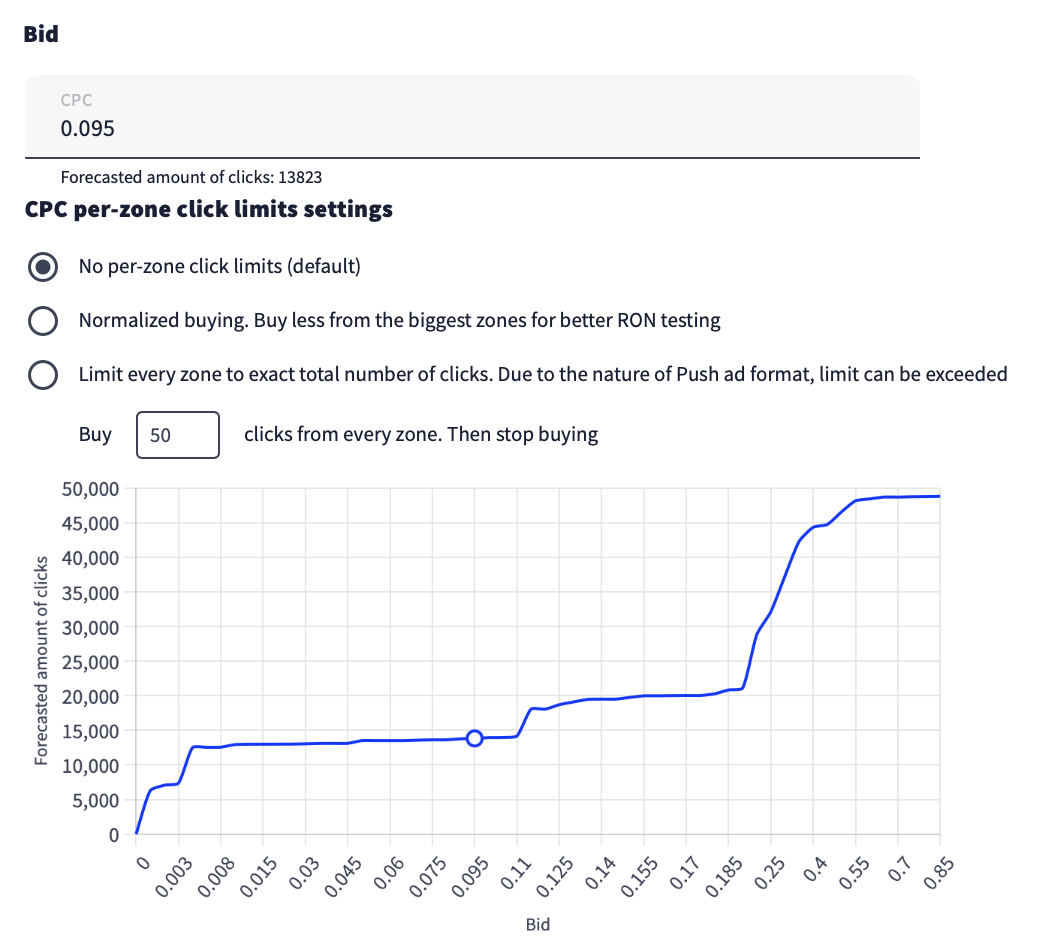
To start, we didn’t set a high budget, aiming to test the campaign’s performance before increasing funds later. We also set the subscription age to 0–3 days, in line with our initial targets.

Then we incorporated our whitelist of feeds to scale only on those that showed good performance. We also added a blacklist of zones and feeds to steer clear of collecting any traffic from them.

But that’s not all. We also added device and OS targets aligned with the offer’s KPIs. With that done, we submitted the campaign for moderation.
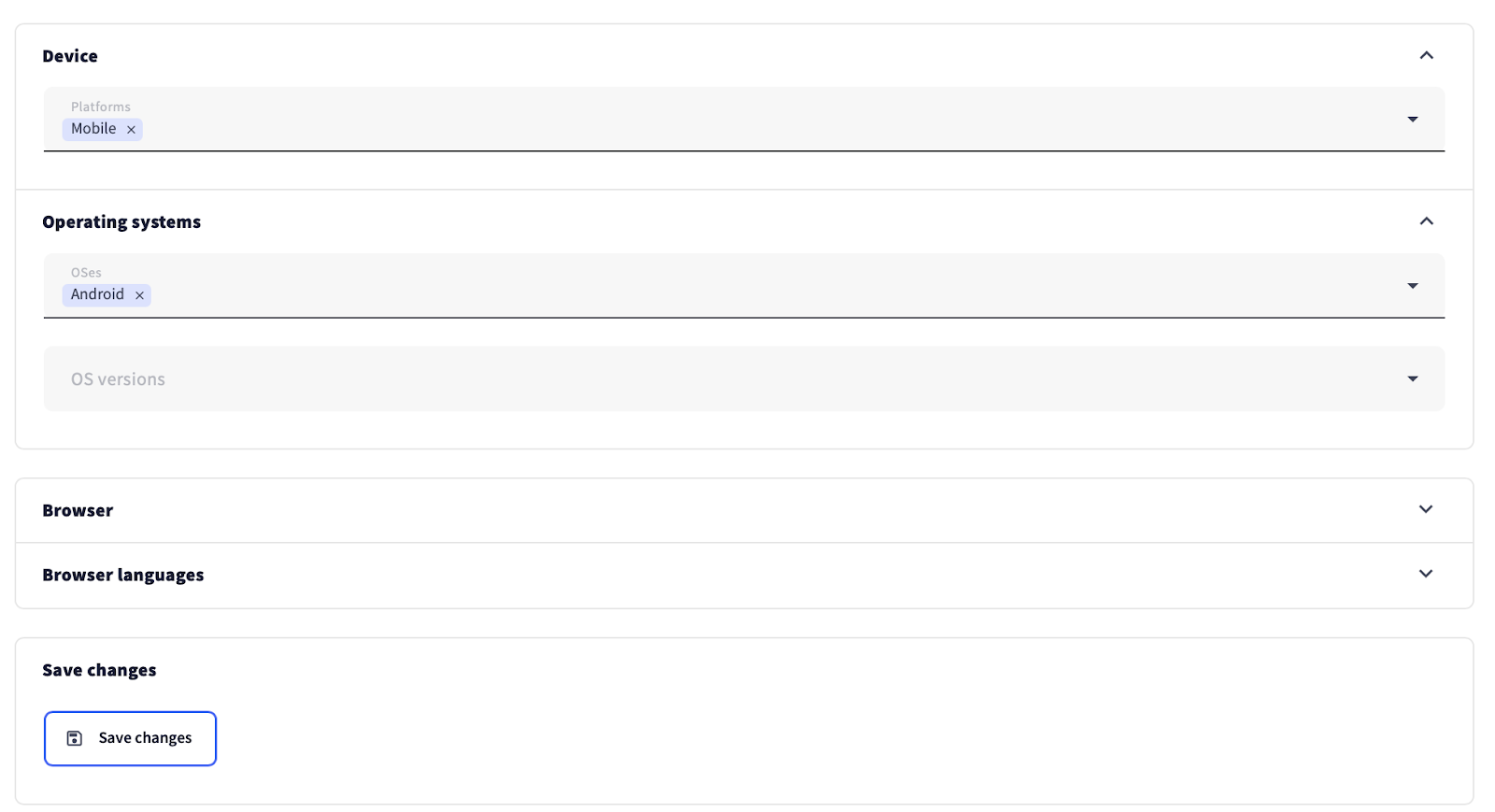
Fine-Tuning the CPC Campaign
Once traffic started flowing, we optimized the campaign by zones—stopping the ones that didn’t deliver any results, as usual.

We did the same with creatives.

To narrow down the targets and get more precise, high-converting traffic, we removed the non-productive OS versions.

And now, after fine-tuning the performance, it was time to increase the budget to get more traffic and boost potential profit.

Anyway, after two days of running the campaign, we already saw substantial results.
CPC Scaling Results
The whitelist we built during the SmartCPC test played a key role in the new CPC campaign. As a result, the campaign became profitable, since the traffic from the whitelist was well-targeted and a perfect fit for our offer. Unlike the SmartCPC test, during which we had experimented with and explored all the traffic channels suggested by the platform.
All in all, the outcome is very promising: 15.70% ROI against -33.48% ROI during the initial test.

Scaling the CPA Goal Test
When it comes to scaling the CPA Goal test, there are two main approaches. First, you can create a whitelist of zones and other targets that delivered conversions, just like we did with the SmartCPC test, and launch a separate CPC campaign. Second, you can optimize and scale directly within the ongoing CPA Goal campaign.
Based on our test results, we chose to scale within the existing CPA Goal campaign—it had already optimized successfully and delivered high CR and traffic from profitable zones. Honestly, we would never launch a CPC campaign with a fixed bid of $0.4 against a $3 payout, but CPA Goal allowed us to explore all available traffic—both cheap and expensive—and made us comfortable setting such a bid.
Also, a perk of scaling within the same campaign is that you can analyze performance over the entire test period, giving a complete picture of results.
But enough tooting CPA Goal’s horn—let’s dive into the scaling itself. As a reminder, here’s what we achieved after the test:

Now, let’s continue optimizing. In the previous steps, we blocked a few unprofitable zones, so next, we focused on stopping any zones that still didn’t bring conversions.

On the second day of scaling, we continued adhering to our strategy.

Then we compared the new traffic from the first and second days of scaling and stopped the unproductive zones.

Optimizing creatives is equally important. Instead of the ones we removed earlier, we created new ones inspired by the top performers. We added the following:
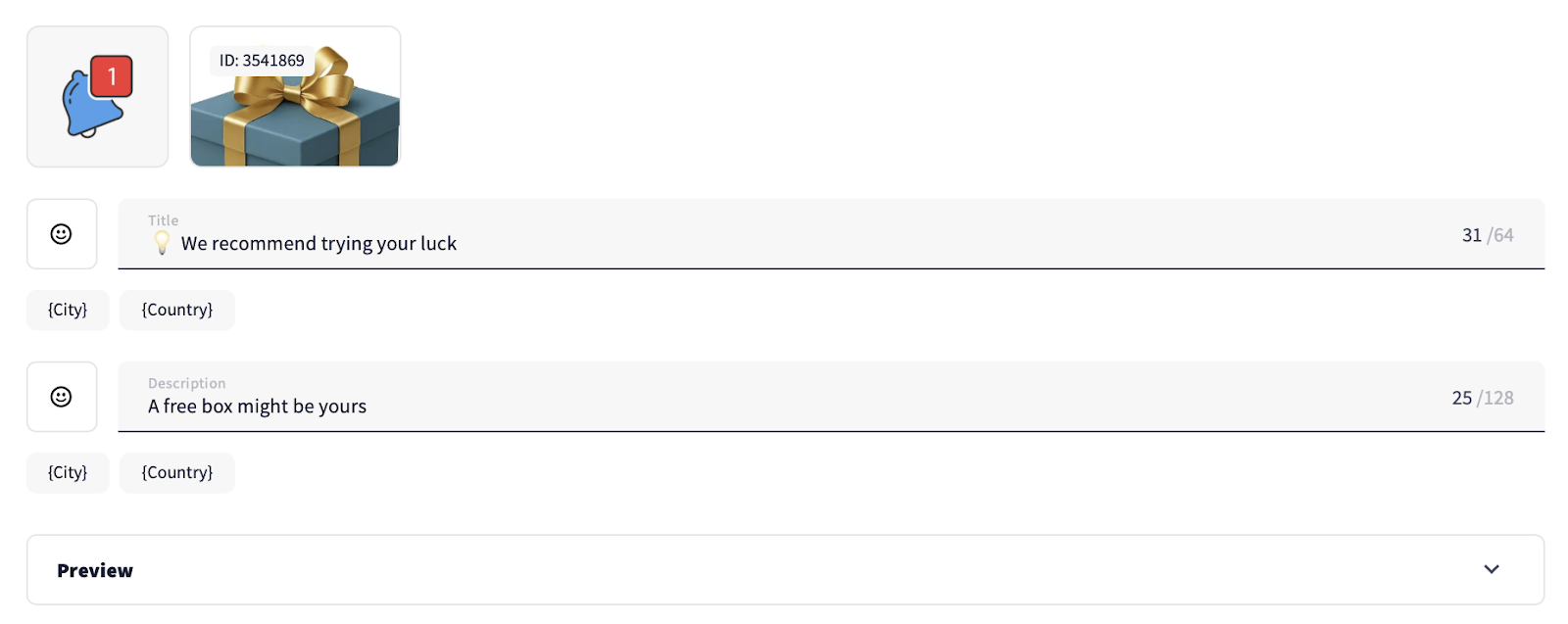
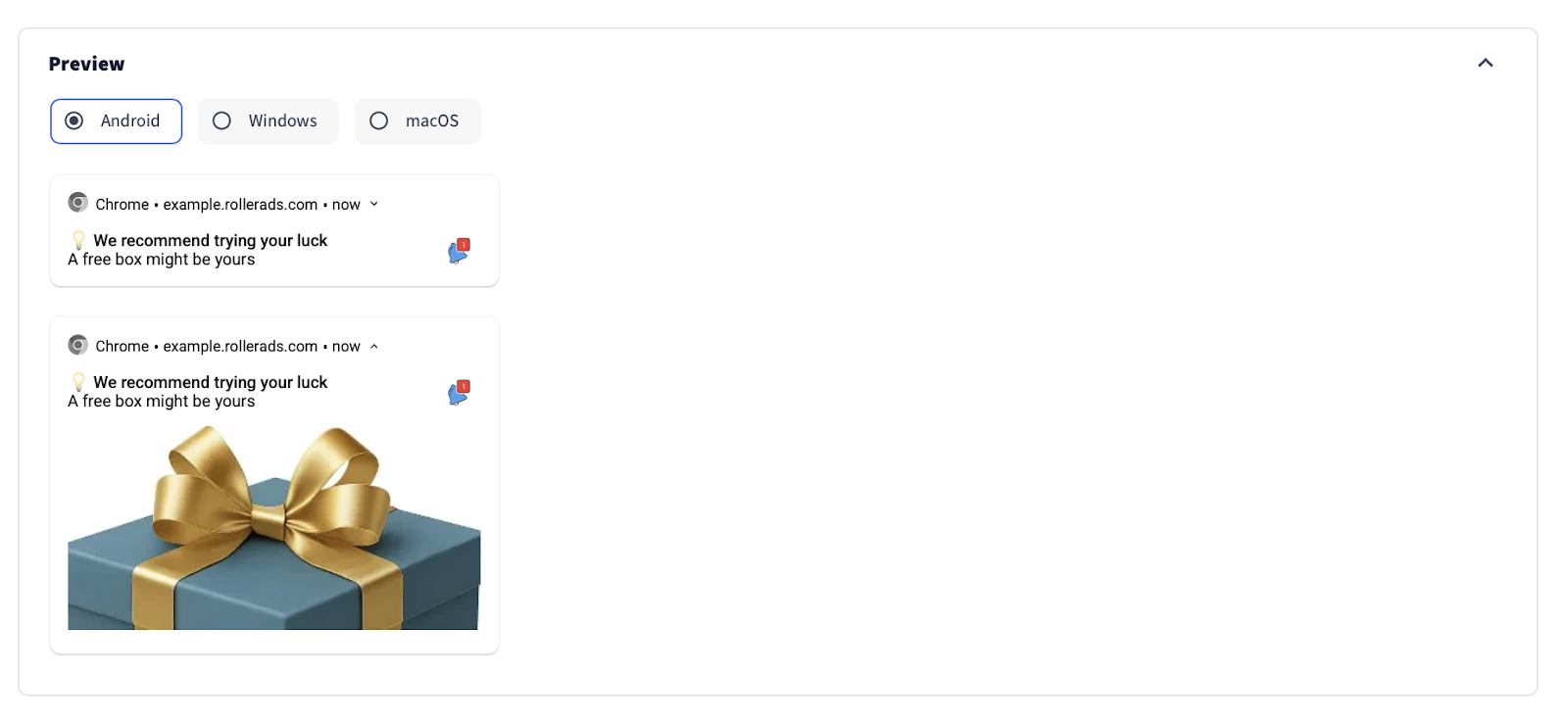
Then the process was simple: we monitored performance and ditched the ones that stayed in the red.

After two days of scaling, the results looked very promising: 50.05% ROI against -36.27% ROI after the initial test.

Sizing Up the Results from Both Campaign Scalings
Here is what both campaign scalings brought us:

Let’s calculate the outcomes, including the initial SmartCPC test.
SmartCPC test with scaling on CPC
If we add up the results of the SmartCPC test and the CPC scaling, we’ll still see a negative profit and ROI. However, this test provides a solid foundation for further scaling, which will very likely help bridge the gap and achieve positive ROI and profit.
Cost: $102.14
Revenue: $96
Profit: -$6.14
ROI: -6.01%
CPA Goal test with scaling within the same CPA Goal campaign
Cost: $107.76
Revenue: $117.00
Profit: $9.24
ROI: 8.58%

As we can see, both SmartCPC and CPA Goal are solid choices for running initial tests. However, CPA Goal has a clear edge: it saves time and includes expensive zones that SmartCPC might not reach.
That said, there are situations where SmartCPC is still the safer option:
- Conversion costs are high
- Your offer has a two-step conversion model
- You can’t inform the platform about conversions (via postback)
If you find yourself in any of these scenarios, choosing SmartCPC is the safer bet.
Closing Thoughts
Testing is the backbone of any successful affiliate campaign. As we’ve seen, each bid model has its strengths and ideal use cases. CPC can work if you’re confident in your targeting, but it’s often less effective for initial tests. SmartCPC offers automation and efficiency, helping create informative white- and blacklists for further scaling. CPA Goal shines when you want to save time, access expensive zones, and optimize traffic toward a specific cost per action.
The key takeaway? Use the right bid model for your tests and monitor carefully. By combining thorough testing with strategic scaling, you can turn initial campaigns into profitable, repeatable results. With these insights, you now have a roadmap to navigate your next tests with confidence. And if you have any questions, we are a message away: use any of the social media links below to get in touch.
